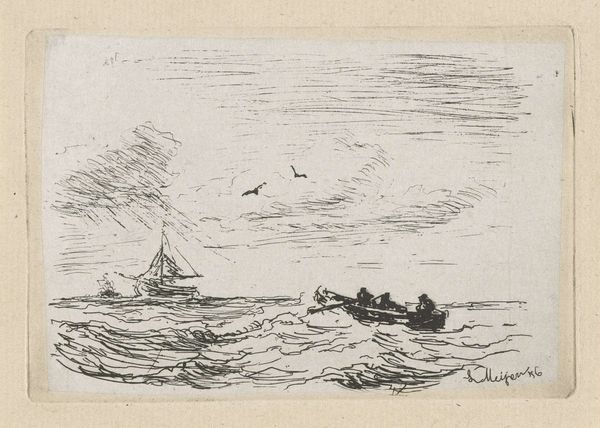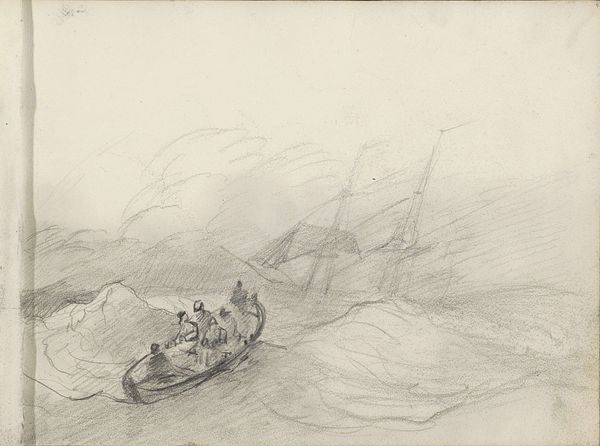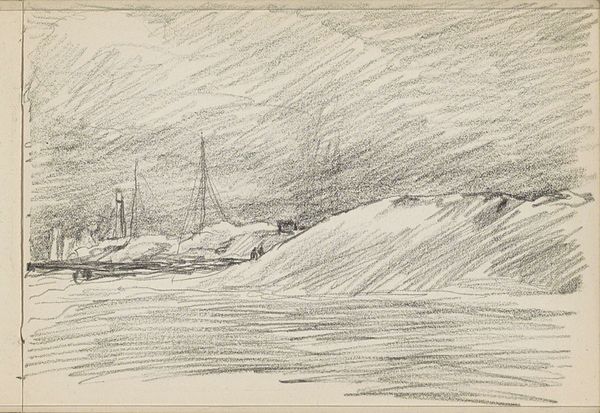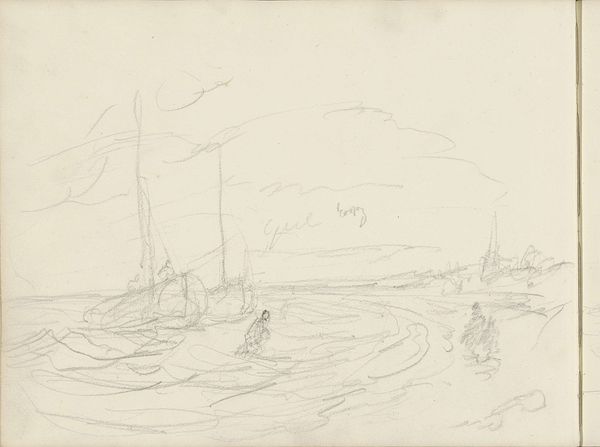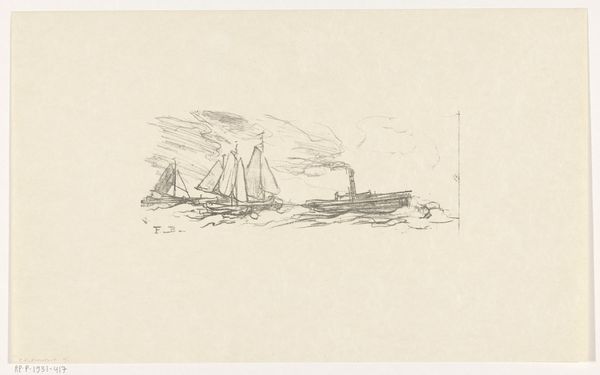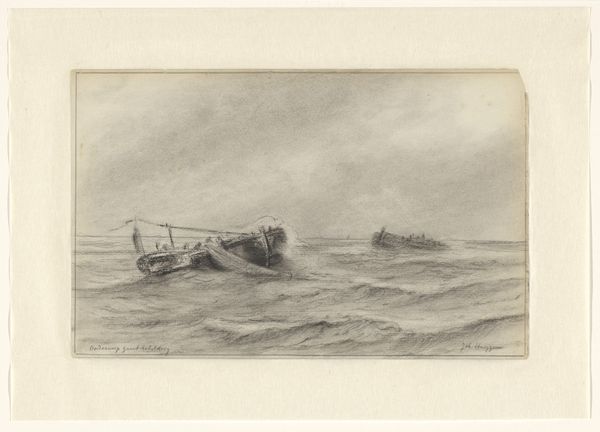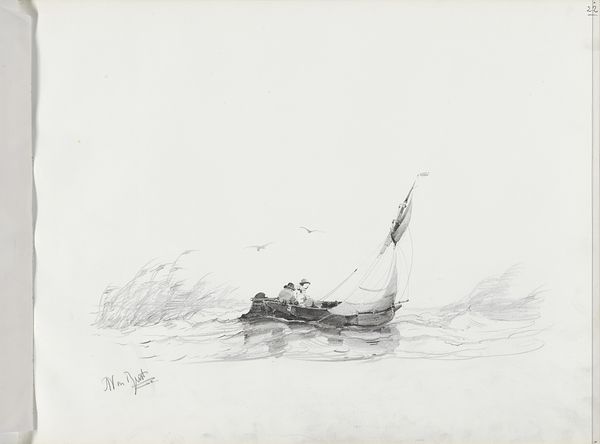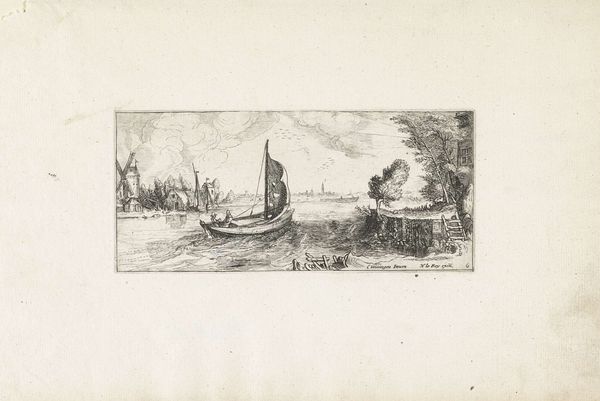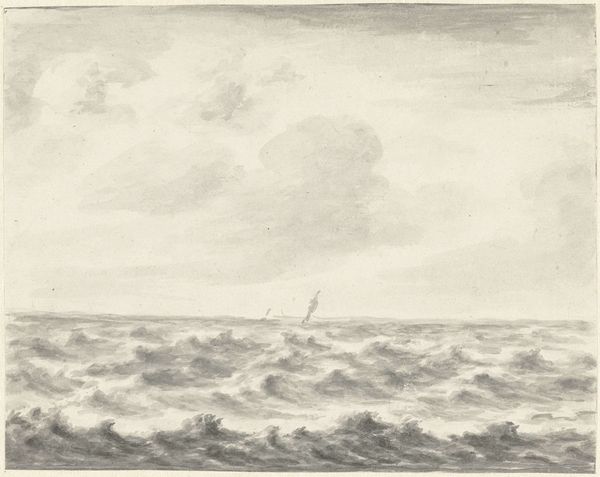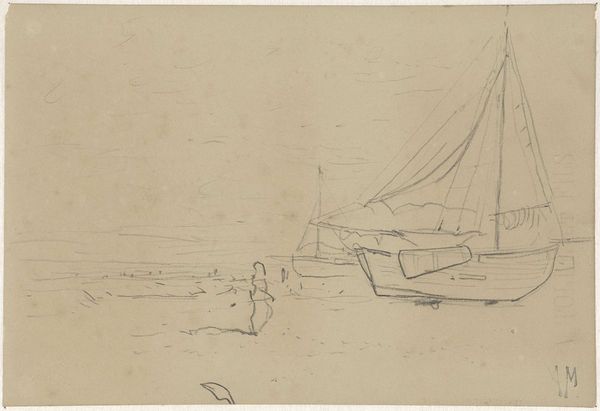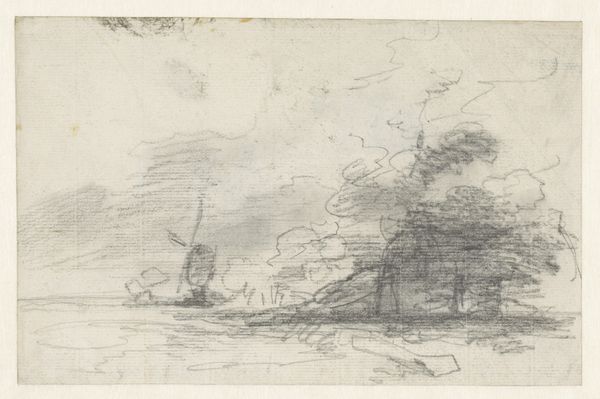
drawing, pencil
#
drawing
#
dutch-golden-age
#
pencil sketch
#
landscape
#
pencil
#
pencil work
#
realism
Dimensions: height 242 mm, width 347 mm
Copyright: Rijks Museum: Open Domain
Editor: So, this is "Zeilschip op een onstuimige zee," or "Sailing Ship on a Stormy Sea," a pencil drawing by George Hendrik Breitner from 1873, currently held in the Rijksmuseum. The sketch really captures the drama of the turbulent sea. What do you see in this piece, beyond the obvious depiction of a storm? Curator: What immediately strikes me is how this drawing encapsulates the intersection of human ambition and the sheer force of nature. Breitner created this in 1873, but this struggle of man versus nature is obviously not something unique to his lifetime. These Dutch Golden Age artists especially understood their cultural and financial reliance on trade with other countries around the globe – the merchant voyages – for which the ocean was their route. I'm interested in what kind of commentary he might be making about colonialism. Editor: So, are you suggesting this sketch of a stormy sea and a small boat holds a mirror to broader societal and power dynamics? Curator: Exactly. Consider how frequently maritime disasters were, and continue to be, associated with capitalist accumulation; the figures on the boat, battling against the waves, can be viewed as a reflection of our own precarious existence within these grand systems. Think about it. Who are the individuals being placed in danger for this trade, and what benefit does that produce? The chaos of the sea is then not just a depiction of weather, but also a metaphor for the instability inherent within the Dutch economy at the time. What do you make of this connection? Editor: That’s a really fascinating point. I had been focused on just the visual drama of the waves and the ship, but framing it in that socio-economic context really shifts my understanding. Curator: Yes, and it helps us think more deeply about the artistic choices made. The sketch's roughness, for example, mirrors the harsh realities of the lives dependent on the sea, turning what seems like a simple seascape into a powerful statement about risk, reward, and the human cost of ambition. Editor: Thank you for expanding my perspective on this. I see the sketch in a completely different way now. Curator: My pleasure! It is so useful to think about historical works as continuing cultural commentaries and invitations to expand on old questions, in modern times.
Comments
No comments
Be the first to comment and join the conversation on the ultimate creative platform.
